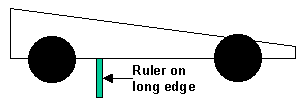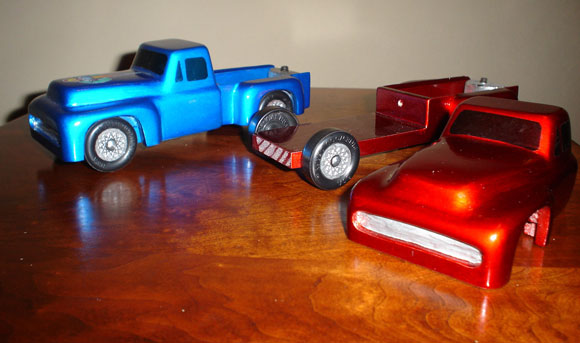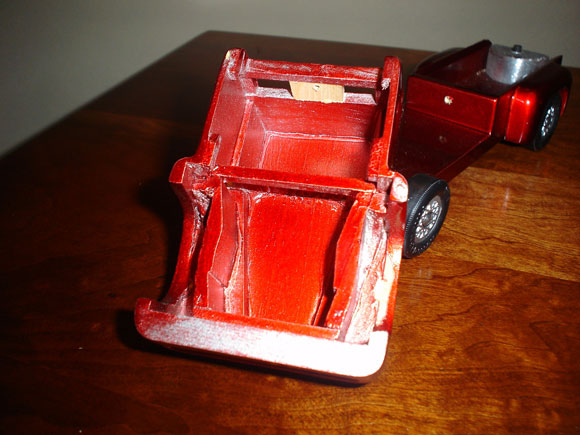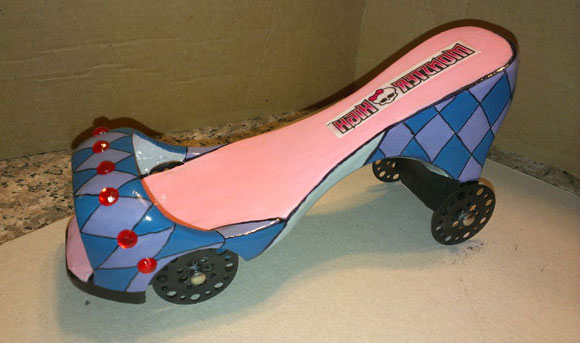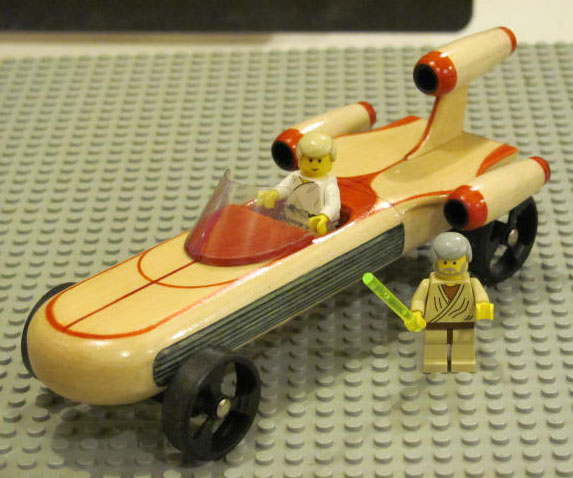Editor's Notes
Welcome to the New Pinewood Derby Season
Fall is in the air (even here in Arizona), and the smell of sawdust
will soon be appearing in workshops, garages, and basements across the
country. Yes, it is pinewood derby time!
Here at Maximum Velocity, we have a full agenda of articles and photos
to educate, entertain, and (hopefully) inspire you. But we are always
looking for your input. So, please send us your photos, speed tips,
articles, memories, etc.
New Plan Booklet: Car Plans 8" is now available with plans for the
NitoRail, the Barracuda, and the Vector.
New Car Kits: We are introducing two new car kits: the Jaguar and the
Formula One. The Jaguar is a low-profile, tungsten-based kit modeled
after the Jaguar XKE, while the Formula One is modeled after the
Maximum Velocity logo car.
  Weight: We now have a Tungsten Bar that is the equivalent of five,
1/4 inch cubes.
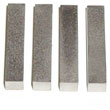 Speed Wheels for Awana: We are introducing Speed Wheels for Awana
that are not weight-reduced. The weight-reduced version are still
available.
 Decals and Paint Stencils: We have added two new decals and two new
paint stencils.
In addition, we have Slotted BSA Speed Axles for adjusting the alignment of your car with a small screwdriver, the Pro-Body Slotter for cutting accurate axle slots, and we once again have Stock Wheels
for Awana races.
Click Here to see all of the new items.
|
 |
Inventory Clearance Sale
We also are clearing inventory on several items including:
Light-weight (3.2 ounces and under) plain and slotted blocks, Most of our SuperCar kits, The ever-popular Wedge SE, The special edition Funny Car Kit (only 19 left), and the Propeller Car Kit.
We don't have many left, so don't delay. Click Here to find our clearance items. Don't miss out on the great prices.
MV Basic & Wedge Car Kits
 
If you are planning a race and are not required to use a specific kit
type, our MV Basic or Wedge Car Kit are just what you need. These attractively
priced kits are equipped with:
Quality Block - Unlike the blocks provided by some organizations,
our blocks are soft, northwestern pine blocks, cut precisely to 7
inches long, 1-3/4 inches wide, and 1-1/4 inches tall. These
dimensions, as well as the axle slots accurately duplicate the
dimensions of standard pinewood derby blocks from BSA and PineCar. Simple Axle Preparation - Don't worry about filing off flaws, or
losing hub caps. Our Speed Axles have no burrs or crimp marks, and
install without hub caps. With or without polishing, they are ready to
go. We supply five, so you have a spare. Quality Wheels - Forget cheap, out of round wheels. Our MV wheels
are top-quality wheels. You will not be disappointed with the quality
of these wheels.
So, if your organization does not mandate a particular kit type,
consider our MV Basic Car Kits or MV Wedge Car Kits
Can We Help?
If we can help you in any way with your pinewood derby project, or if you have any feedback regarding this newsletter, please contact us at: info@maximum-velocity.com
|









